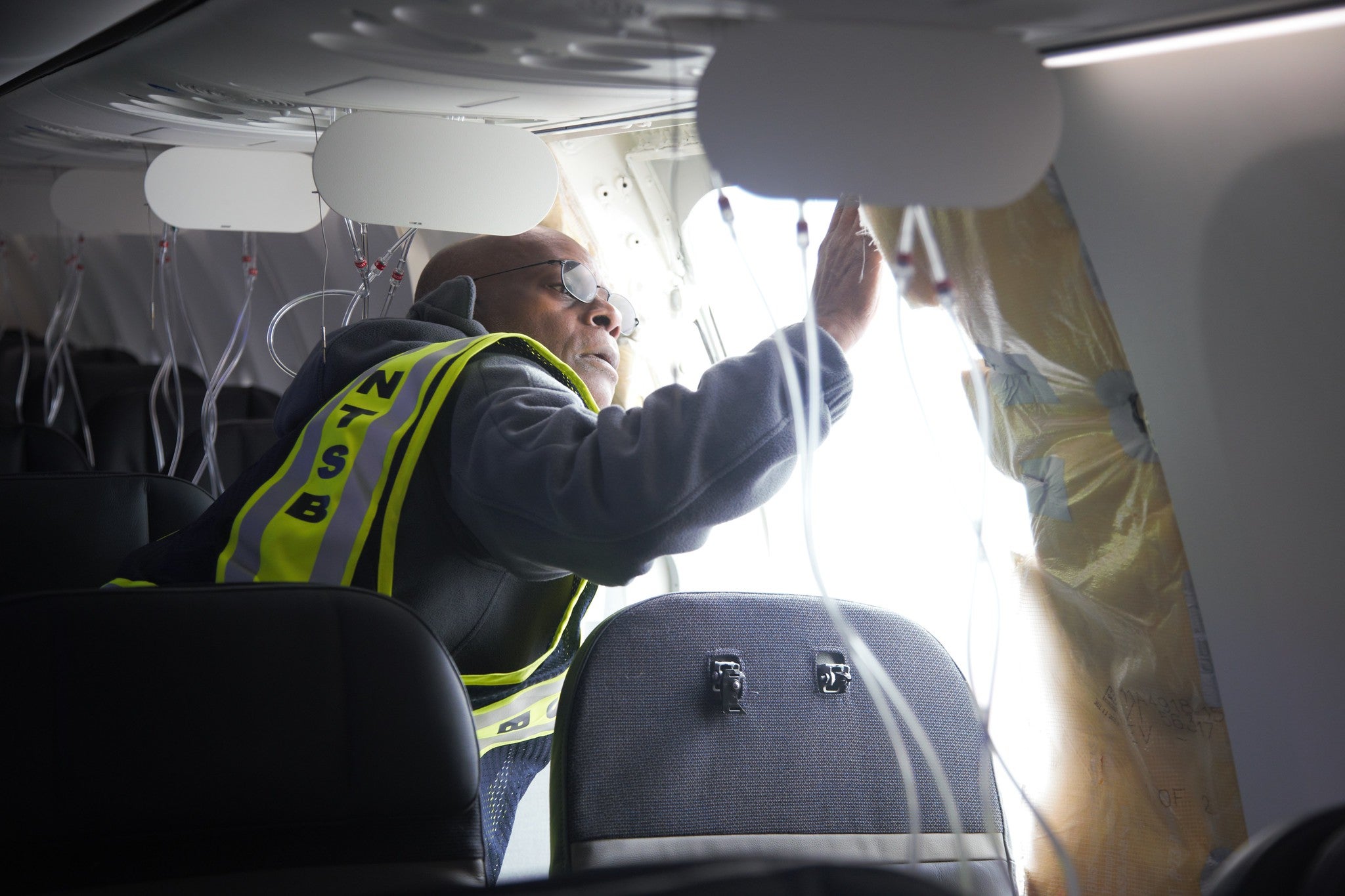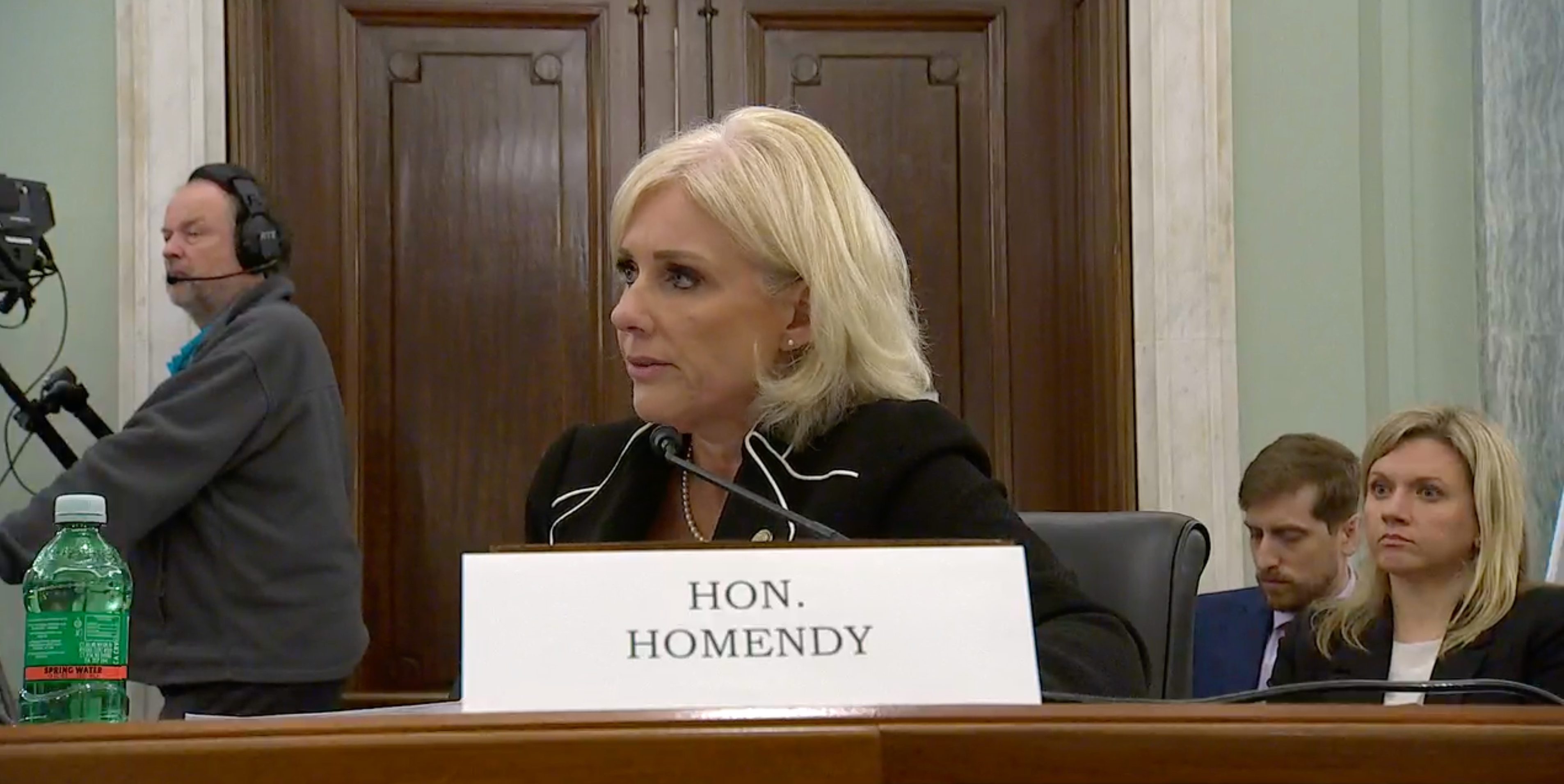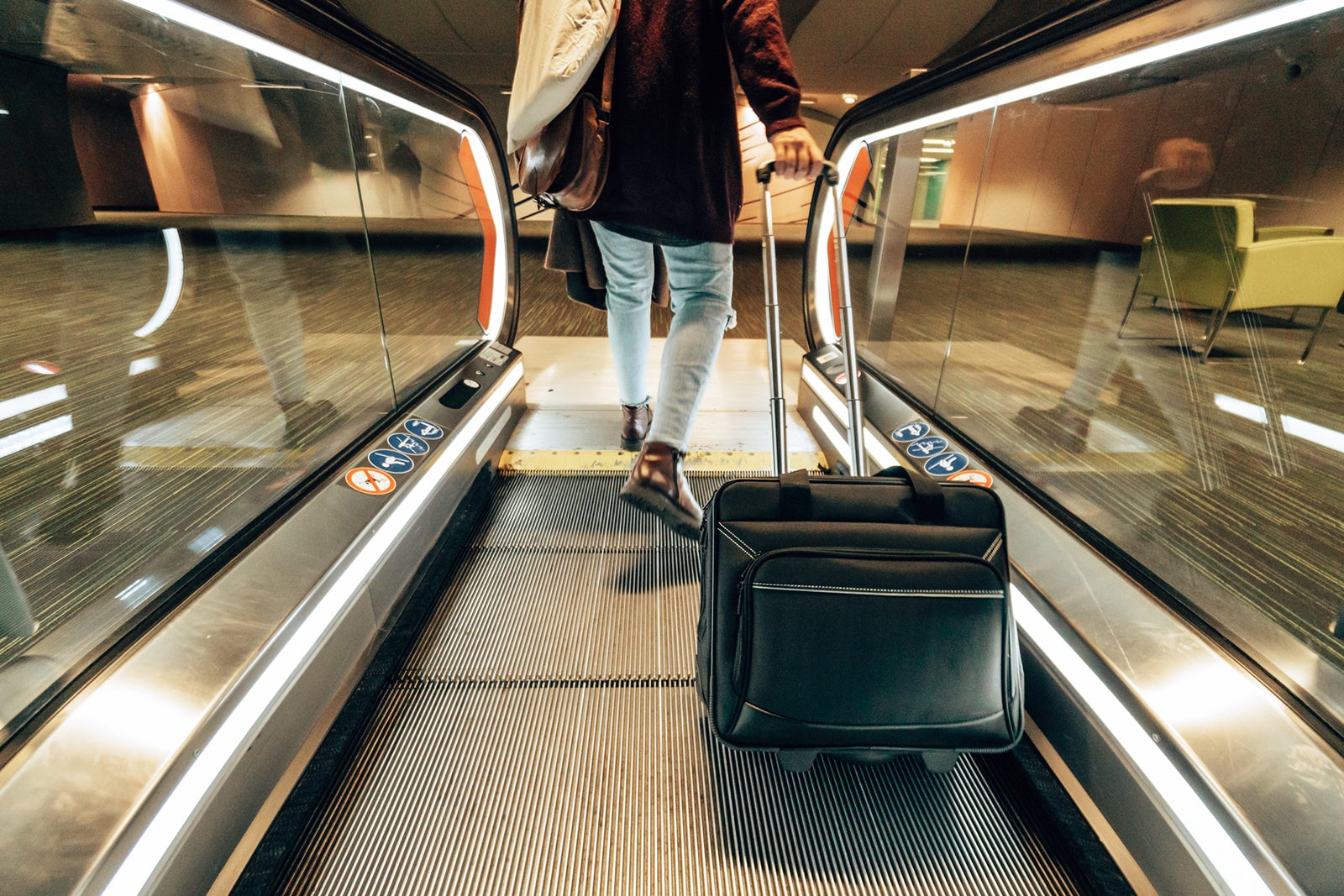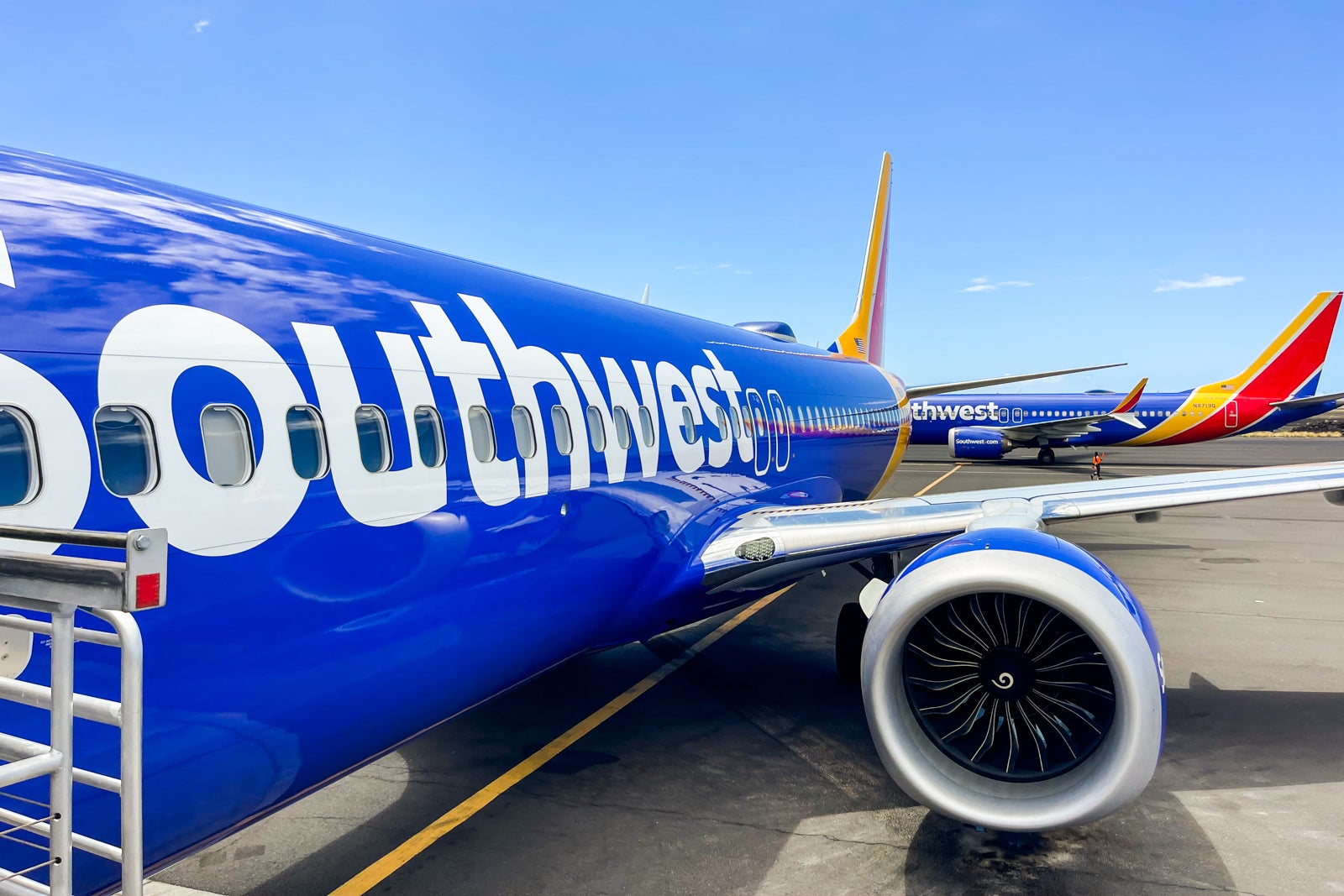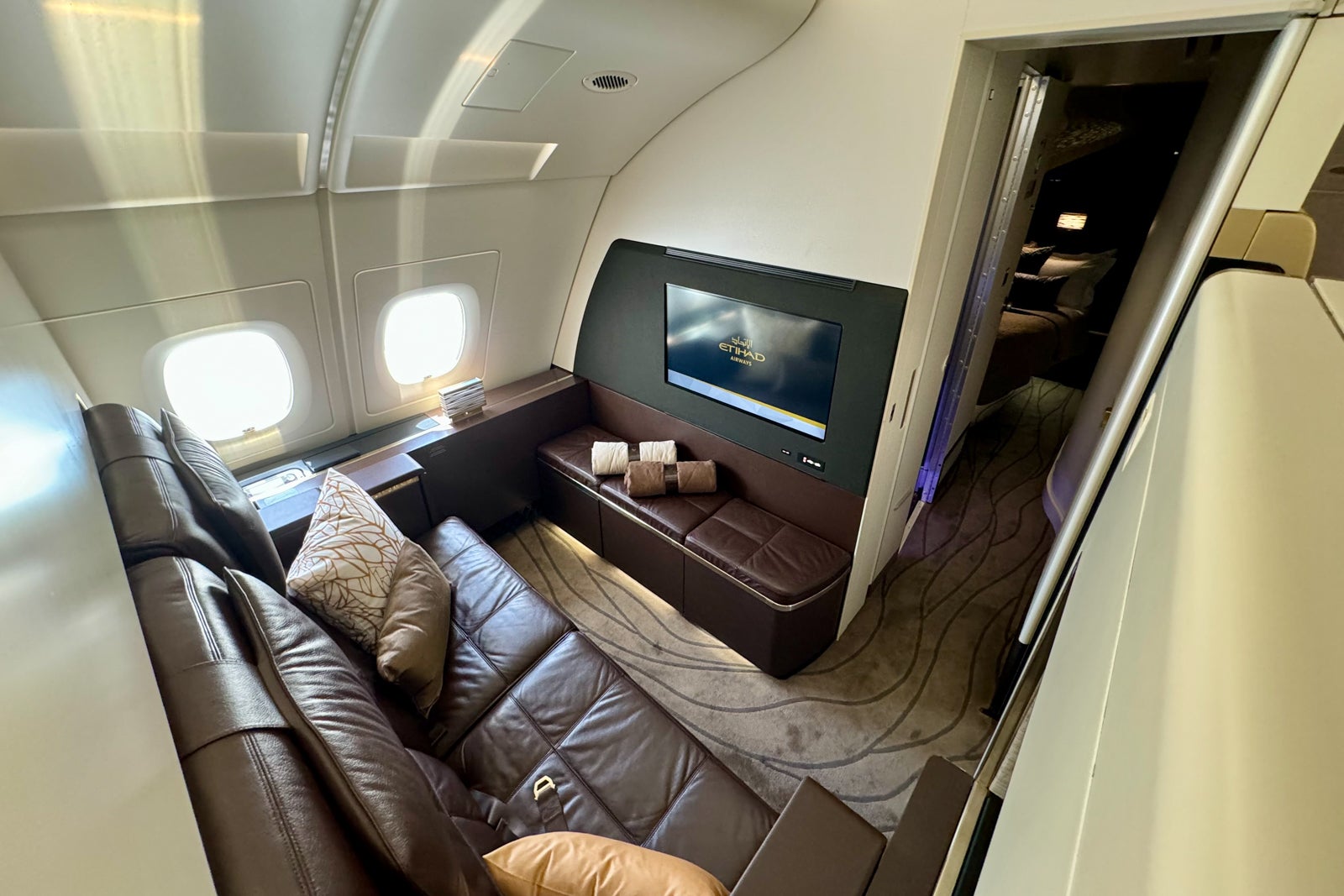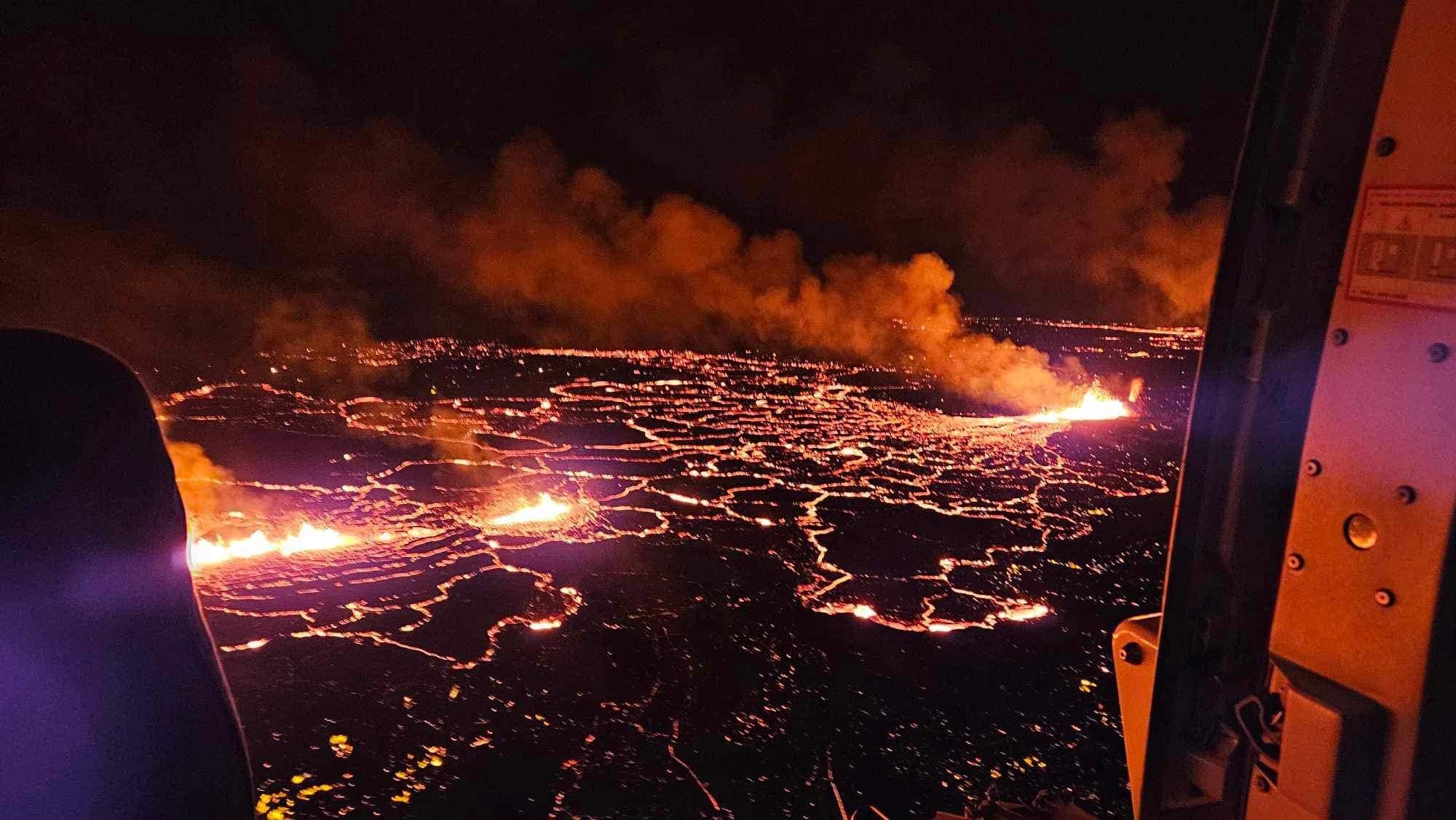Boeing has failed to provide crucial information in the 737 MAX 9 investigation, NTSB says
Boeing has not been fully cooperative with investigators looking at January’s door plug incident on board an Alaska Airlines 737 MAX 9, the lead investigator of a federal probe into the company said Wednesday during a congressional hearing.
National Transportation Safety Board Chair Jennifer Homendy told a Senate panel that the agency’s investigators have not received some essential information that they have sought from the plane-maker.
Want more aviation news? Sign up for TPG’s free biweekly Aviation newsletter.
“Boeing has not provided us with the documents and information that we have requested numerous times over the past few months, specifically with respect to opening, closing and removal of the door plug, and the team that does that work,” Homendy said.
“It’s absurd that two months later, we don’t have that,” she added.
During a Senate Committee on Commerce, Science, and Transportation hearing on transportation safety, Homendy again said that Boeing has failed to provide information surrounding the work that was carried out on the accident aircraft’s door plug, as well as details such as the names of employees who may have worked on the door plugs. Homendy also said that Boeing has not provided paperwork surrounding specific procedures for identifying, storing and retaining quality records.
“Either they exist and we don’t have them, or they do not exist, which raises several different questions, depending on which is the right answer,” Homendy said.
Related: Bolts were missing on the Boeing 737 MAX in Alaska Airlines accident, NTSB finds
The Alaska Airlines jet was missing bolts that secure the door plug in place, according to the preliminary results of the NTSB investigation.

Daily Newsletter
Reward your inbox with the TPG Daily newsletter
Join over 700,000 readers for breaking news, in-depth guides and exclusive deals from TPG’s experts
Overall, Boeing has not provided the NTSB with an appropriate accounting of its quality-related record-keeping processes, Homendy said.
“We have been informed that they have a procedure to maintain documents on when work is performed, including when door plugs are open, closed or removed,” Homendy said. “We have not been able to verify that.”
“Without that information, that raises concerns about quality assurance, quality management safety management systems within Boeing,” she added.
A team of 25 people deals with the doors and the door plugs, Homendy said. Because Boeing has not provided the employees’ names or details, the NTSB has not been able to interview them, which is a crucial part of understanding Boeing’s quality control practices and any possible deficiencies, she noted.
Additionally, the agency has not been able to interview the door plug team’s manager, who is currently on medical leave, Homendy said.
Investigators have instead focused on various emails and text messages, dates and shift staffing, and other information, but have not been able to fully identify the employees. The NTSB requested security camera footage as well, but Boeing only stores the recordings for 30 days, Homendy said.
Homendy said that the NTSB has received anonymous whistleblower reports from workers at Boeing and subcontractors, and urged other employees to reach out to the agency.
“I thought that the CEO said that they would cooperate to the fullest,” said Sen. Maria Cantwell, D-Wash., the committee chair. “It seems like this information is now stymieing your investigation.”
The plane-maker has not given satisfactory reasons for the delay and missing information, Homendy said.
“We have either not gotten an answer, or they’re saying that they’re trying to provide it but can’t find it.”
In a statement, Boeing said that it has cooperated fully with the NTSB, and said that it now provided the detailed list of employees on the door team.
“Early in the investigation, we provided the NTSB with names of Boeing employees, including door specialists, who we believed would have relevant information,” Boeing said in its statement. “We have now provided the full list of individuals on the 737 door team, in response to a recent request.”
Boeing also suggested that the removal and replacement of the door plug on the aircraft involved in the Alaska Airlines incident may not have been documented, although it was not clear whether any policies or procedures had been broken.
“With respect to documentation, if the door plug removal was undocumented there would be no documentation to share,” Boeing said.
Interviewing the relevant employees and tracing unified safety procedures has been an overall challenge, Homendy said, partly because of the use of contractors. While trying to speak with several staffers from Spirit AeroSystems, which built the fuselage, the NTSB learned that three of them were subcontractors from three different companies.
Related: What to know about the Boeing 737 MAX 9 and the MAX series
Homendy said that it’s normal for the agency to face difficulties and delays gathering information during such types of investigations, but stressed that the difficulty getting information from Boeing has been “disappointing.”
The NTSB has been in touch with its legal counsel, Homendy said, and can exercise additional authority if necessary, she said.
“We certainly have subpoena authority, and we’re not afraid to use it,” Homendy said. “We hope it doesn’t come to that. We hope that we can get cooperative participation.”
“But it does concern us that we don’t have certain information we should have today,” she added.

